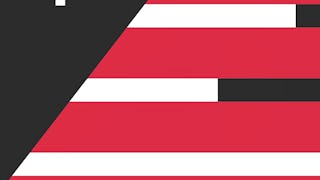In this course, we trace the evolution of networks and identify the key concepts and functions that form the basis for layered architecture. We introduce examples of protocols and services that are familiar to the students, and we explain how these services are supported by networks. Further, we explain fundamental concepts in digital communication, and focus on error control techniques that include parity check, polynomial code, and Internet checksum. Students will be required to have some previous programming experience in C-programming (C++/Java), some fundamental knowledge of computer organization and IT architecture and a background in computer science is a plus.

Enjoy unlimited growth with a year of Coursera Plus for $199 (regularly $399). Save now.

Fundamentals of Network Communication
This course is part of Computer Communications Specialization

Instructor: Xiaobo Zhou
132,873 already enrolled
Included with
(2,411 reviews)
Skills you'll gain
Details to know

Add to your LinkedIn profile
See how employees at top companies are mastering in-demand skills

Build your subject-matter expertise
- Learn new concepts from industry experts
- Gain a foundational understanding of a subject or tool
- Develop job-relevant skills with hands-on projects
- Earn a shareable career certificate

There are 5 modules in this course
This module discusses the evolution of three example networks and their associated services, how services are influencing the evolution of modern networks, and examples of protocols and services.
What's included
4 videos6 readings2 assignments1 discussion prompt
This module discusses the OSI reference model and show how the overall communication process can be organized into functions that are carried out in seven layers, and introduces the TCP/IP architecture with a detailed routing example.
What's included
3 videos4 readings2 assignments1 discussion prompt
This module introduces BSD sockets, which allow the student to write applications that use the service provided by the TCP/IP protocols. It also introduces some fundamentals of digital communications.
What's included
3 videos4 readings2 assignments1 discussion prompt
This module presents coding techniques that can be used to detect errors that may occur during digital transmission. These coding techniques form the basis for protocols that provide reliable transfer of information.
What's included
3 videos5 readings2 assignments1 discussion prompt
This is a comprehensive peer review assessment
What's included
1 reading1 peer review
Earn a career certificate
Add this credential to your LinkedIn profile, resume, or CV. Share it on social media and in your performance review.
Instructor

Offered by
Explore more from Computer Security and Networks
 Status: Free Trial
Status: Free Trial Status: Free Trial
Status: Free Trial Status: Free Trial
Status: Free TrialGoogle
 Status: Free Trial
Status: Free TrialCisco Learning and Certifications
Why people choose Coursera for their career




Learner reviews
2,411 reviews
- 5 stars
74.65%
- 4 stars
17.58%
- 3 stars
3.44%
- 2 stars
1.78%
- 1 star
2.53%
Showing 3 of 2411
Reviewed on Mar 27, 2018
The course was good, and the syllabus too, but the way of teaching is not so impressive, it was just like someone reading from the slides in the video lecture.
Reviewed on Jul 22, 2020
Pretty good course in fundamentals of networks and where to get more information on networks. However, it could do with some more practical content.
Reviewed on Jan 27, 2021
Overall great course! Leart the fundamentals of communucations. Many concepts were explained with powepoint presentations, and good links and books were provided regardingcthe topic.

Open new doors with Coursera Plus
Unlimited access to 10,000+ world-class courses, hands-on projects, and job-ready certificate programs - all included in your subscription
Advance your career with an online degree
Earn a degree from world-class universities - 100% online
Join over 3,400 global companies that choose Coursera for Business
Upskill your employees to excel in the digital economy
Frequently asked questions
To access the course materials, assignments and to earn a Certificate, you will need to purchase the Certificate experience when you enroll in a course. You can try a Free Trial instead, or apply for Financial Aid. The course may offer 'Full Course, No Certificate' instead. This option lets you see all course materials, submit required assessments, and get a final grade. This also means that you will not be able to purchase a Certificate experience.
When you enroll in the course, you get access to all of the courses in the Specialization, and you earn a certificate when you complete the work. Your electronic Certificate will be added to your Accomplishments page - from there, you can print your Certificate or add it to your LinkedIn profile.
Yes. In select learning programs, you can apply for financial aid or a scholarship if you can’t afford the enrollment fee. If fin aid or scholarship is available for your learning program selection, you’ll find a link to apply on the description page.
More questions
Financial aid available,
¹ Some assignments in this course are AI-graded. For these assignments, your data will be used in accordance with Coursera's Privacy Notice.

